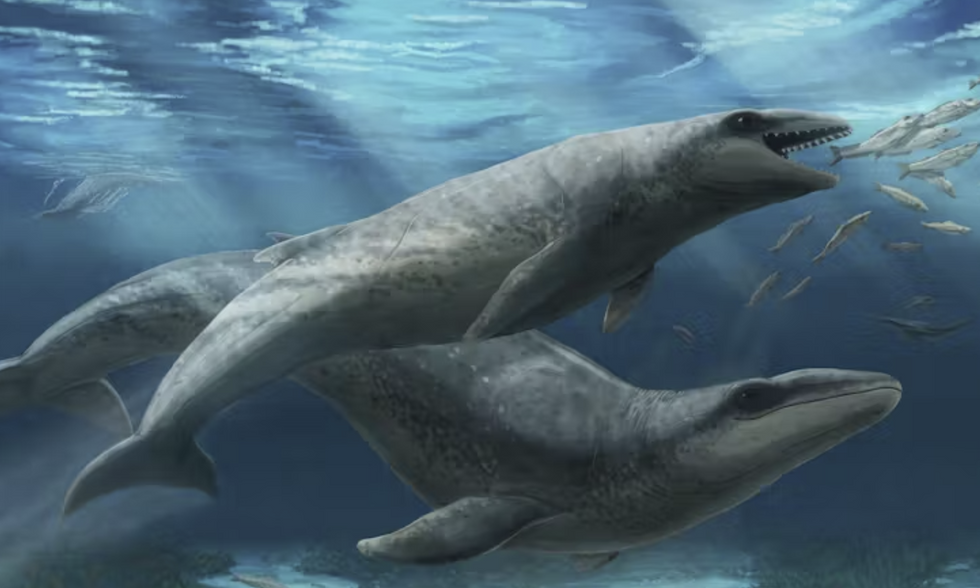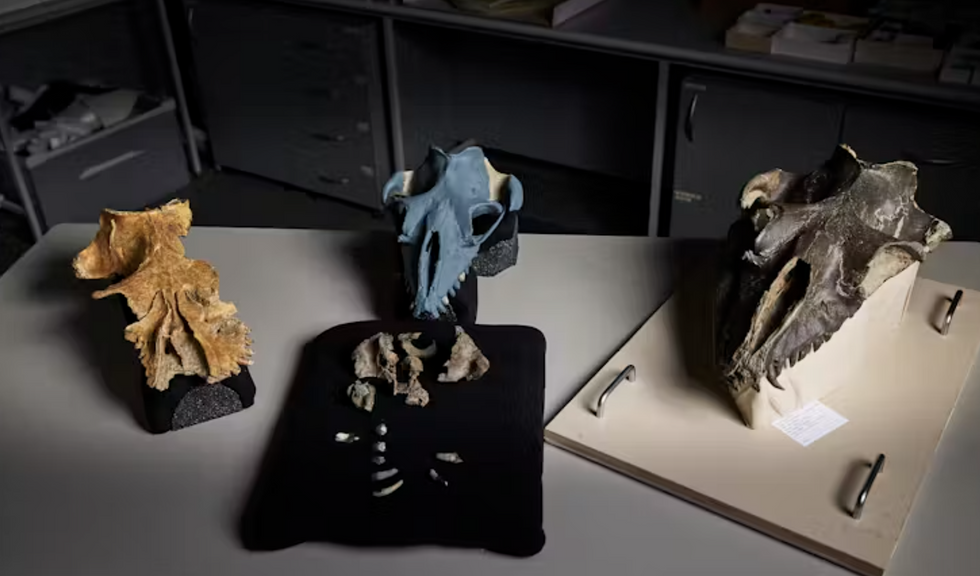



Australian researchers have identified a new prehistoric whale species that lived 26 million years ago, following the discovery of remarkably preserved fossils.
The species, designated Janjucetus dullardi, was identified from skull fragments discovered by local school principal Ross Dullard whilst walking near Jan Juc beach on Victoria coast, Australia in 2019.
Museums Victoria Research Institute scientists determined the fossils represent a previously unknown member of the mammalodontid family, an ancient group of whales that inhabited Australian waters during the Oligocene period.
The discovery marks the first new fossil whale species named from Australia in nearly two decades, according to researchers who published their findings in the Zoological Journal of the Linnean Society.
Dr Erich Fitzgerald, senior curator of vertebrate palaeontology at Museums Victoria, emphasised the find's rarity and scientific importance.
This ancient predator bore little resemblance to today's gentle filter-feeding whales, possessing adaptations suited for hunting in prehistoric seas.
The creature measured approximately three metres when fully grown, comparable to a modern dolphin, though the discovered specimen was likely a juvenile measuring just over two metres.

The Janjucetus dullardi calf and mother
|MUSEUMS VICTORIA
"It's essentially a little whale with big eyes and a mouth full of sharp, slicing teeth," explained lead researcher Ruairidh Duncan. "Imagine the shark-like version of a baleen whale – small and deceptively cute, but definitely not harmless."
The whale's skull featured eyes approaching tennis ball dimensions, a shortened snout, and deeply embedded teeth designed for gripping and tearing prey.
"This was a really gnarly whale that I personally wouldn't want to get in the water with," Dr Fitzgerald noted, describing the heavily constructed skull as "almost over-engineered" for its predatory lifestyle.
The fossil represents just the fourth mammalodontid specimen discovered globally and provides unprecedented detail about these early whale ancestors.

The skulls of the Mammalodon colliveri, Janjucetus dullardi, Janjucetus hunderi
|MUSEUMS VICTORIA/TOM BREAKWELL
Unlike their modern descendants that filter-feed using baleen plates, mammalodontids were active hunters that diverged from the main evolutionary pathway of whales between 27 and 23 million years ago.
The specimen's preservation of teeth and inner ear structures offers researchers unique insights into how these creatures hunted, navigated and adapted to marine life.
"This fossil opens a window into how ancient whales grew and changed, and how evolution shaped their bodies as they adapted to life in the sea," Dr Fitzgerald stated.
Flinders University palaeontologist Professor John Long, not involved in the research, described the discovery as remarkable for understanding the evolutionary transition from carnivorous whales to filter feeders.
The Jan Juc Formation, where the fossil emerged, has yielded numerous prehistoric discoveries from the Oligocene epoch, establishing Victoria's Surf Coast as a crucial site for studying early whale evolution.
During this period, the region experienced warmer conditions with sea temperatures resembling today's subtropical waters near Coffs Harbour, creating an environment teeming with marine life.
"In these seas, there was this extraordinary abundance of life, including all these little whales, giant penguins, sharks, about a third, or even twice as long as today's great white shark, and various other primitive dolphins and other species of whales. It was a very different world," Dr Fitzgerald explained.
Scientists believe mammalodontids became extinct 22 million years ago when global cooling lowered sea levels, eliminating their coastal habitats.
"We're entering a new phase of discovery. This region is rewriting the story of how whales came to rule the oceans, with some surprising plot twists!" Dr Fitzgerald added.
